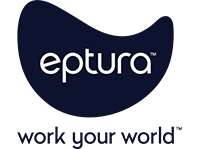In episode 350, host Mike Petrusky speaks with Kay Sargent, senior principal and director of thought leadership for interiors at HOK. She’s a recognized expert on workplace design and strategy and author of the new book, “Designing Neuroinclusive Workplaces: Advancing Sensory Processing and Cognitive Well-Being in the Built Environment.” They share an inspiring conversation about the importance of neuro-inclusive design in the workplace and the impact of the built environment on individuals. In their engaging discussion, they cover how facility management professionals can ensure follow-through on design decisions, and Sargent explains the ways neuro-inclusive design is not just about accommodating specific needs but also optimizing human potential for everyone.
Agenda
- Impact of the built environment on individuals
- Role of technology in creating inclusive spaces
- Need for intentional and evidence-based design
What you need to know: Workplace takeaways
Takeaway 1: Inclusive workplace design isn’t just a nice-to-have but critical for creating spaces where everyone can thrive
“This is a moral imperative,” Sargent says.
“We believe the built environment has a huge impact on individuals, and when we do that well, it can have a positive impact, but if we aren’t really leaning into the science of design and doing it intelligently, it can have negative consequences.”
And these types of design decisions aren’t just about addressing the needs of neurodiverse individuals. They’re about creating spaces that optimize human potential for everyone.
According to Sargent, it requires a clear understanding of the objective effects of design decisions. “I think we need to be much more realistic about this, and then I think we need to really think about the science. There is science … every decision we make — height, scale, color, texture, material — every single decision we make should be intentional, and far too often they’re not.”
Sargent wants facility managers to also be respectful of others’ intentions. “Before, for the sake of making it easier to manage, you veto something a designer has done, please find out whether there’s a really good reason why they did it that could be helping somebody. It’s the difference between whether somebody can come to the office or not.”
Takeaway 2: Technology can empower neurodiverse individuals but must be used thoughtfully to avoid negative impacts
Technology can be a double-edged sword, Sargent warns.
“Many people that are neurodivergent might need a little bit more of a guide, and so they used to have to carry around specialty tablets. When the iPad was invented it kind of normalized people walking around with something in their hand, so it kind of destigmatized that, and that was game changing.”
Technology can also come with potential pitfalls, for neurodiverse and neurotypical alike.
“Digital distractions are shifting our focus and reducing our mindfulness and our ability to get into the flow even more. I mean, our attention span from 2019 went from 2.5 minutes, which is already really bad, to less than a minute, right? We’re just so used to these short quick clips, and we’re not, we can’t, you know, we’re just kind of always staying in the shallows. We’re not going deep anymore, and I think that’s really troubling.”
Takeaway 3: Authenticity and understanding are key to creating inclusive environments
“I think there’s a word that keeps kind of resonating with me: authenticity. I think so many people right now are looking for quick fixes, and they’re looking for trends and what everybody else is doing. And they are not thinking deeply enough about who they are,” Sargent shares.
She understands that because many people don’t fully understand the issues and the options, they’ll make mistakes. But it’s important to keep trying and re-examine our assumptions about what works best in different spaces.
Workplace management insights
- Many individuals can benefit from common technologies like iPads, closed captioning, and dictation tools, which can help reduce stigma and provide necessary accommodations.
- Digital distractions like social media are increasingly impacting attention spans and mindfulness in the workplace.
- Facility managers and corporate real estate leaders should collaborate with designers to understand the intentional design choices made to support neurodiverse individuals, as these choices can have significant impacts on well-being and productivity.
- Neuro-inclusive design is about accommodating specific needs but can also benefit all employees by creating more supportive and adaptable work environments.
Do a deep dive into more workplace insights by exploring all Workplace Innovator podcast episodes.





